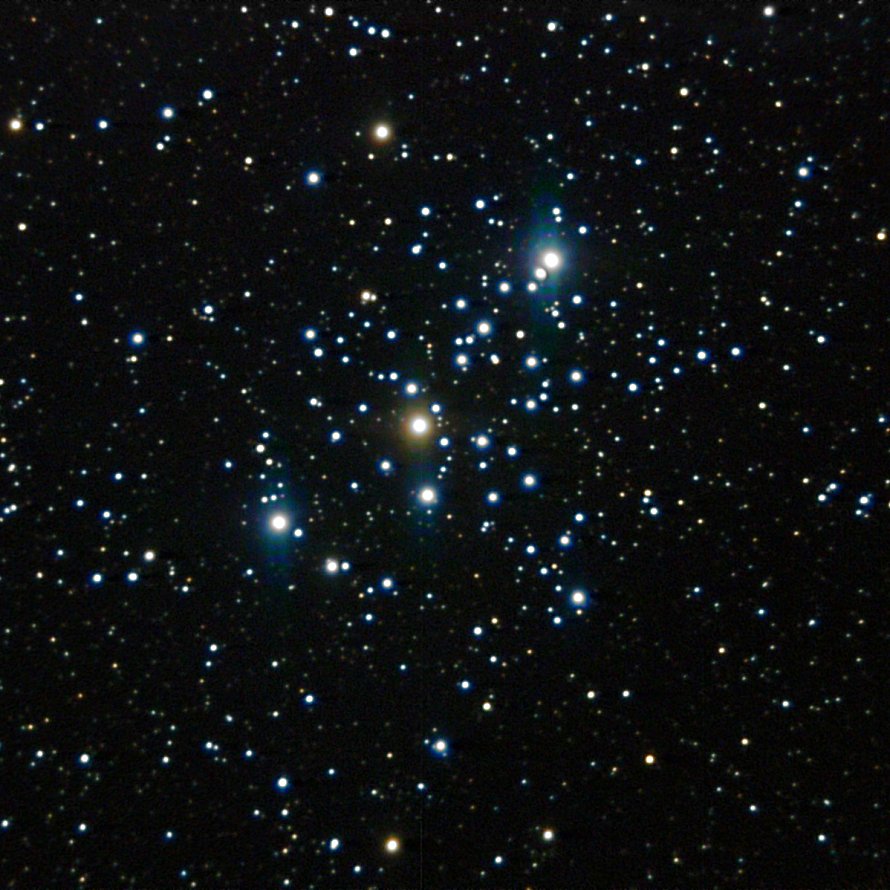M103 (NGC 581)
Messier 103 (NGC 581) is an open cluster located in the constellation Cassiopeia, in the Perseus Arm of the Milky Way Galaxy in the Local Group of galaxies. M103 is 10000 light years away from Earth.
M103 is best viewed during winter, is magnitude 7.4, and can be viewed with binoculars. M103 is 6' in apparent size. For reference, the full moon is 30'.
Observing difficulty: Easy
- Name:
- Type:
- open cluster
- Constellation:
- Cassiopeia
- NGC or IC:
- NGC 581
- Magnitude:
- 7.4
- Viewing:
- binoculars
- Size:
- 6'
- Distance (light years):
- 10000 LY
- RA:
- 1h 33.2m
- Dec:
- 60 42'
- Season:
- winter
- Milky Way location:
- Perseus Arm
- Galaxy group:
- Local Group
- Messier Marathon #:
- 8
* The naked eye can see up to magnitude ~7-8 objects under ideal dark sky conditions.
A Bright Star Cluster
Messier 103 (M103), also known as NGC 581, is one of the many open clusters listed in Charles Messier?s catalogue. Located in the constellation of Cassiopeia, it is approximately 10,000 light-years away from the Earth. This open star cluster was first catalogued by Pierre M?chain in 1781, subsequently added to Charles Messier's famous catalogue, and is one of the farthest known open clusters.
Physical Characteristics of Messier 103
M103 is a relatively small and dense open cluster, comprising of about 40 stars spread over an area of approximately 15 light-years. The age of the cluster is estimated to be about 25 million years, making it relatively young in astronomical terms. Its stars, including several red giants and a number of fainter, white main sequence stars, contribute to the beautiful view it offers astronomers.
The most noticeable feature of M103 is its range of stellar colors. The brightest star in the cluster is a red giant, shining at magnitude 7. It's a binary star, whose companion is of magnitude 10.8. Another binary system in the cluster consists of two stars that are magnitude 10.5 and 10.8 respectively. These, along with the other stars, create a rich tapestry of stellar evolution and color.
Magnitude and Distance
Messier 103 is located at an approximate distance of 10,000 light-years from our solar system. It has an apparent magnitude of 7.4, which allows it to be faintly seen by the naked eye under optimal conditions. Nevertheless, it is more often viewed through small telescopes, where it presents as a somewhat loose, irregularly shaped scattering of stars.
Finding and Observing Messier 103
Messier 103 can be found in the constellation Cassiopeia, which is easily recognizable due to its distinctive "W" shape. The cluster is located near the star Ruchbah, a second-magnitude star that forms part of the "W". M103 is northeast of Ruchbah by about 1 degree, making it relatively easy to locate.
Despite its relative dimness, M103 can be observed with binoculars or a small telescope. Under clear, dark skies, observers may be able to discern several of its brightest stars and appreciate their variety of colors. Larger telescopes, particularly under high magnification, can provide a more detailed view of the cluster, allowing many of the fainter stars to be seen.
Messier 103 provides a window into the early stages of star development and stellar evolution, and its location within the striking constellation of Cassiopeia makes it an appealing target for stargazers and astronomers alike.



